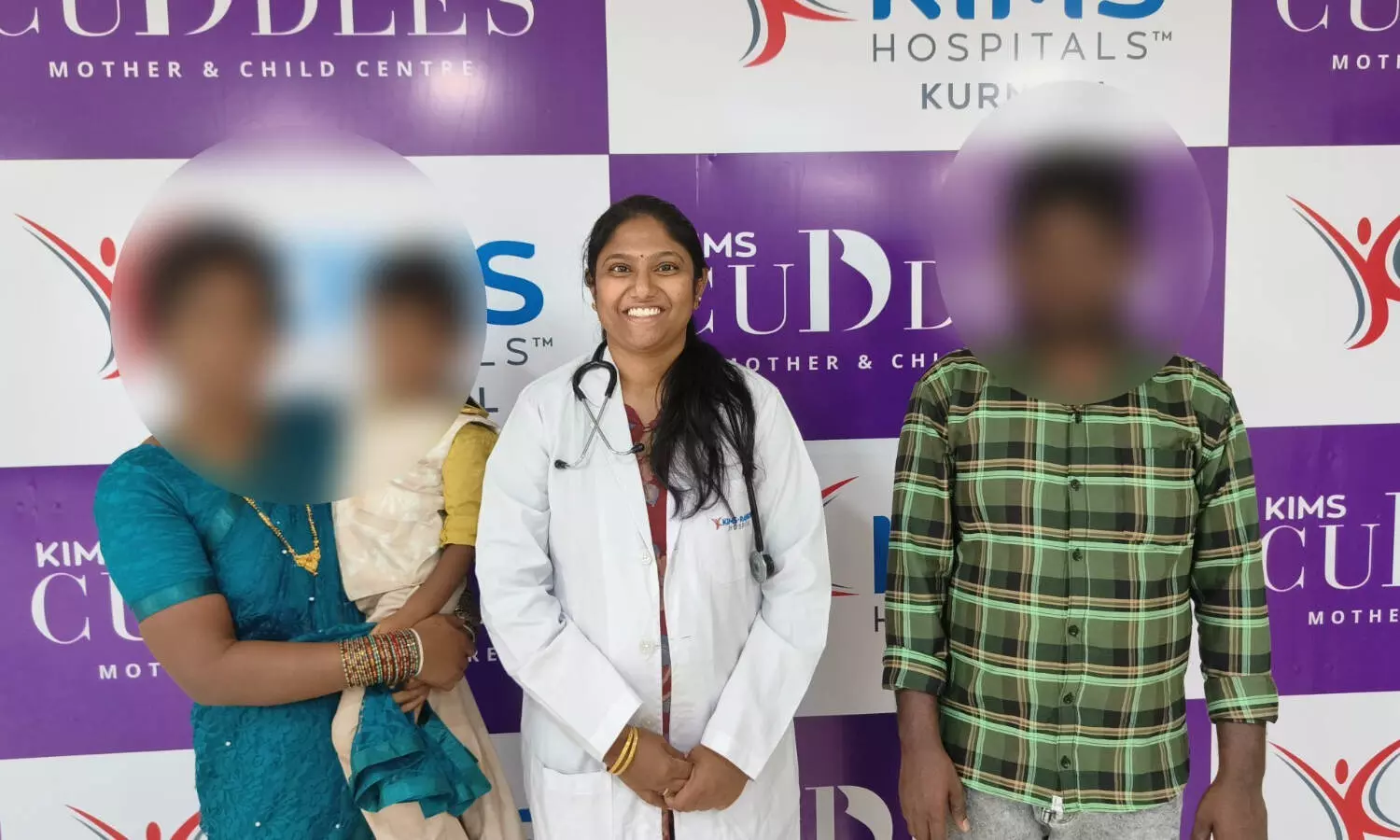Both testes on one side: Rare disorder in 5-year-old operated at KIMS Kurnool
Both testes on one side: 5-year-old from Kadapa with rare disorder operated at KIMS Kurnool
By Newsmeter Network
Kurnool: Normally, boys have one testis on each side of the scrotum. But in a highly unusual and rare case, a 5-year-old boy from the undivided Kadapa district was found to have both testes on the same side.
The condition is extremely rare, occurring in only one in a million cases.
The child developed severe pain and swelling in the right testicle, which turned red and uncomfortable. Alarmed by this, his parents rushed him to KIMS Cuddles Hospital in Kurnool, where paediatric and neonatal surgeon and paediatric urologist Dr V Sai Prasuna successfully diagnosed and treated the condition with surgery.
What was the medical case about?
Dr Sai Prasuna explained: “The boy’s father, an auto driver from Kadapa, brought his 5-year-old son to our emergency ward as the boy had intense pain and swelling in his right testicle. An ultrasound scan initially suggested an obstructed inguinal hernia, where part of the intestine slips into the scrotum, causing pressure and inflammation of the intestines. However, during clinical examination, we couldn’t feel the left testis. When we asked the parents, they said both testes were noticed in the scrotum earlier. We assumed the left one might have been a retractile testis.”
“As we prepared for hernia surgery to avoid complications with the intestines, we were surprised to find both testes had descended through the hernia sac on the same (right) side. On further examination, we found that the spermatic cord with the vas deferens for both testes were fused together. To make the situation more complex, there were also underdeveloped female reproductive structures like a rudimentary uterus and fallopian tubes present between them.”
“Despite the complexity, we carefully separated the testicles while preserving their blood vessels and vas deferens. We relocated the left testis to the left side of the scrotum trans-septally through the right hemiscrotum and the right one to the right hemiscrotum, ensuring both were in their correct anatomical positions.”
Child discharged; organs expected to function normal
“Currently, the child is doing well and has been discharged. In the future, both testes are expected to function normally. Even if the relocated left testis fails to function due to the strain of repositioning, the right testis will be sufficient to produce sperm and support fertility. The underdeveloped female structures will not result in any female characteristics, as they are non-functional. This condition, called Transverse Testicular Ectopia with Persistent Mullerian Duct Syndrome (PMDS), is seen in one out of 4 million male births, with only about 300 cases reported worldwide to date. Often, it presents as an obstructed hernia and can usually be missed on ultrasound scans,” Dr Sai Prasuna said and emphasised the importance of expert evaluation and early intervention in such rare congenital anomalies.